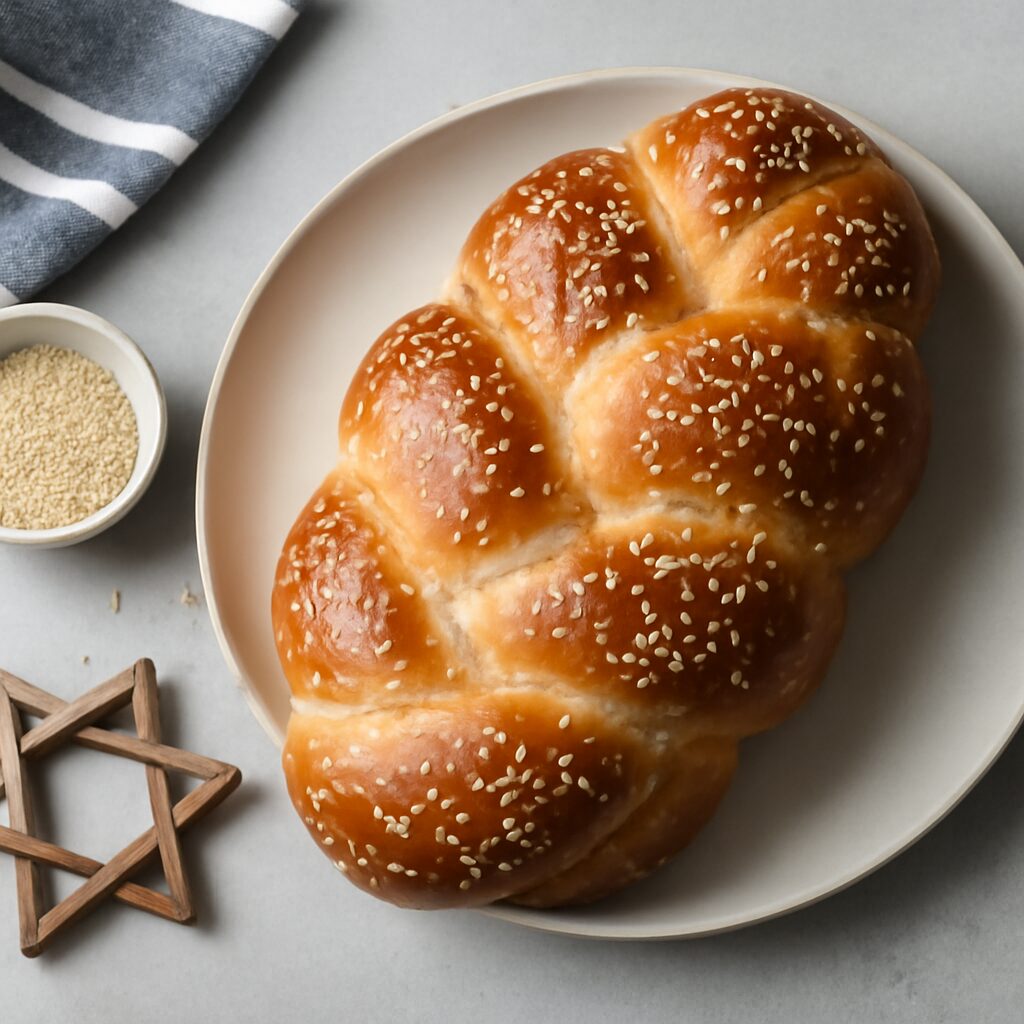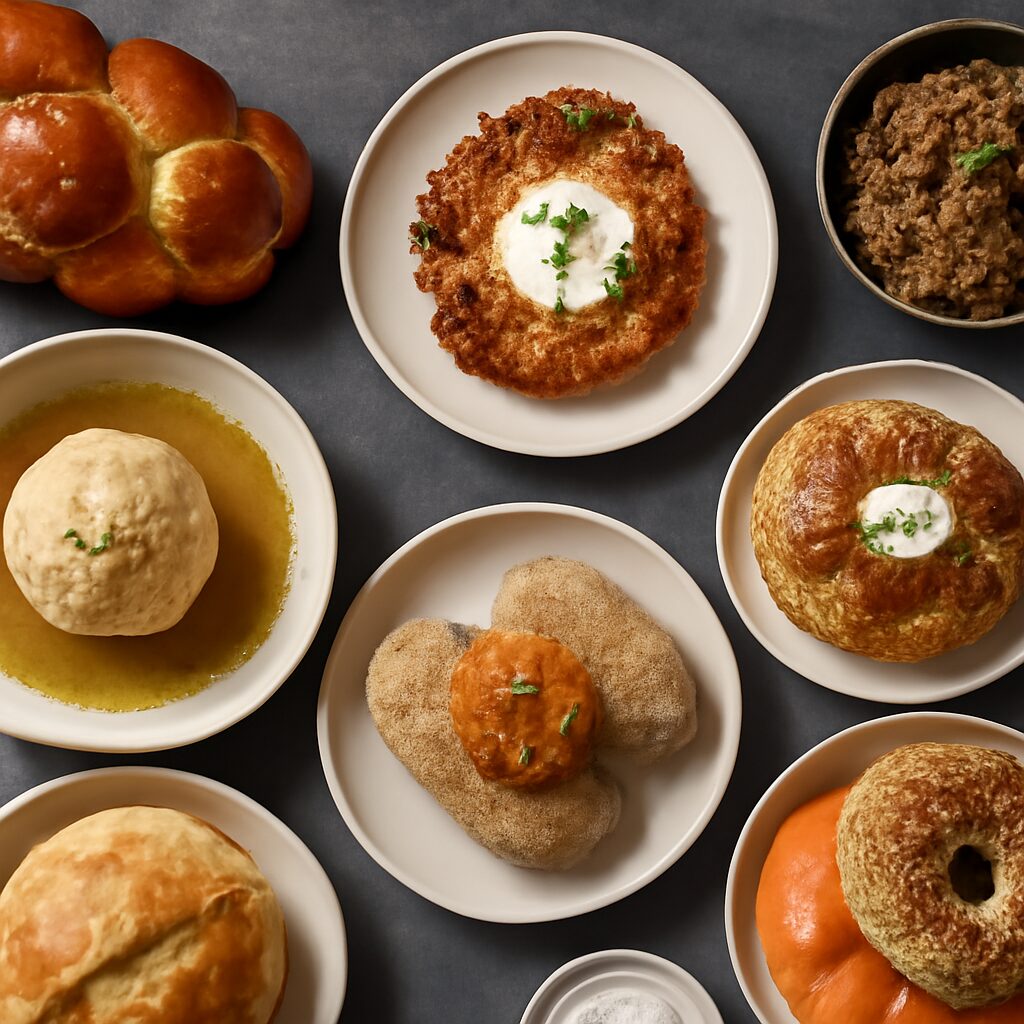
Jewish cuisine is a rich tapestry of flavors shaped by history, tradition, and cultural exchange. From hearty Ashkenazi staples to vibrant Sephardic specialties, these dishes tell stories of resilience and community. Exploring these essential foods offers a delicious way to connect with Jewish heritage.
Jewish cuisine is full of comforting and festive foods passed down through generations. These ten classic dishes highlight both Ashkenazi (Eastern European) and Sephardic (Mediterranean/Middle Eastern) traditions. Each one tells a story of Jewish culture through flavor and history.
1. Matzo Ball Soup
Matzo ball soup is often called “Jewish penicillin” because of its comforting qualities. Soft or firm dumplings made from matzah meal simmer in golden chicken broth, creating the ultimate comfort dish.

A Passover Tradition
Ashkenazi Jews have long served this soup at Passover seders. However, it has become a year-round favorite in Jewish homes and delis.
Healing and Nostalgia
Even medieval physician Maimonides recommended chicken soup for its healing properties. Whether the matzo balls are light “floaters” or dense “sinkers,” each spoonful delivers warmth and nostalgia.
2. Challah
Challah is a beautifully braided egg bread that plays a central role in Jewish traditions.
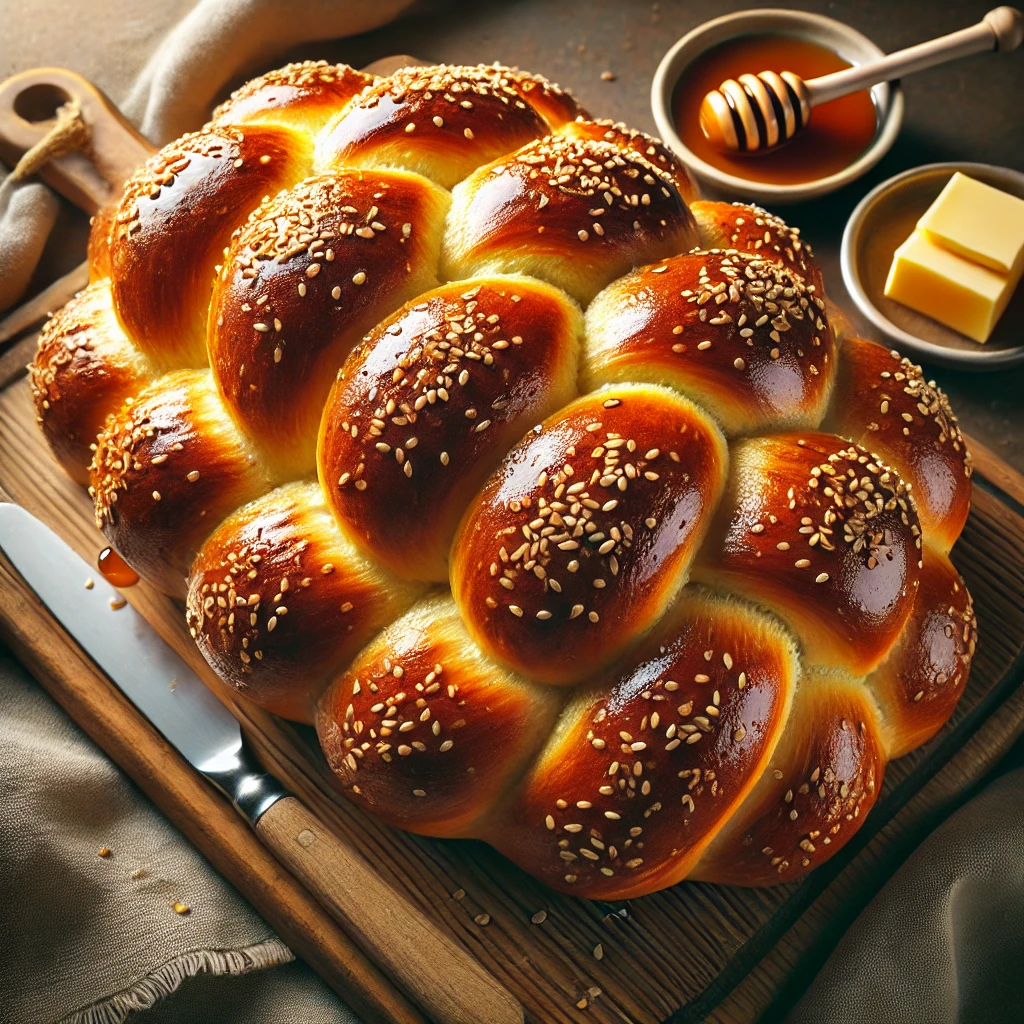
A Symbol of Shabbat and Holidays
Jews bless and serve two loaves on Shabbat, representing the double portion of manna given in the desert. On Rosh Hashanah, they bake it in a round shape to symbolize the cycle of the year.
A Versatile and Beloved Bread
This slightly sweet bread, often topped with poppy or sesame seeds, originated in medieval Germany. Today, it’s enjoyed worldwide, from simple slices to challah French toast.
3. Latkes (Potato Pancakes)
Latkes are crispy, golden potato pancakes most commonly eaten during Hanukkah.
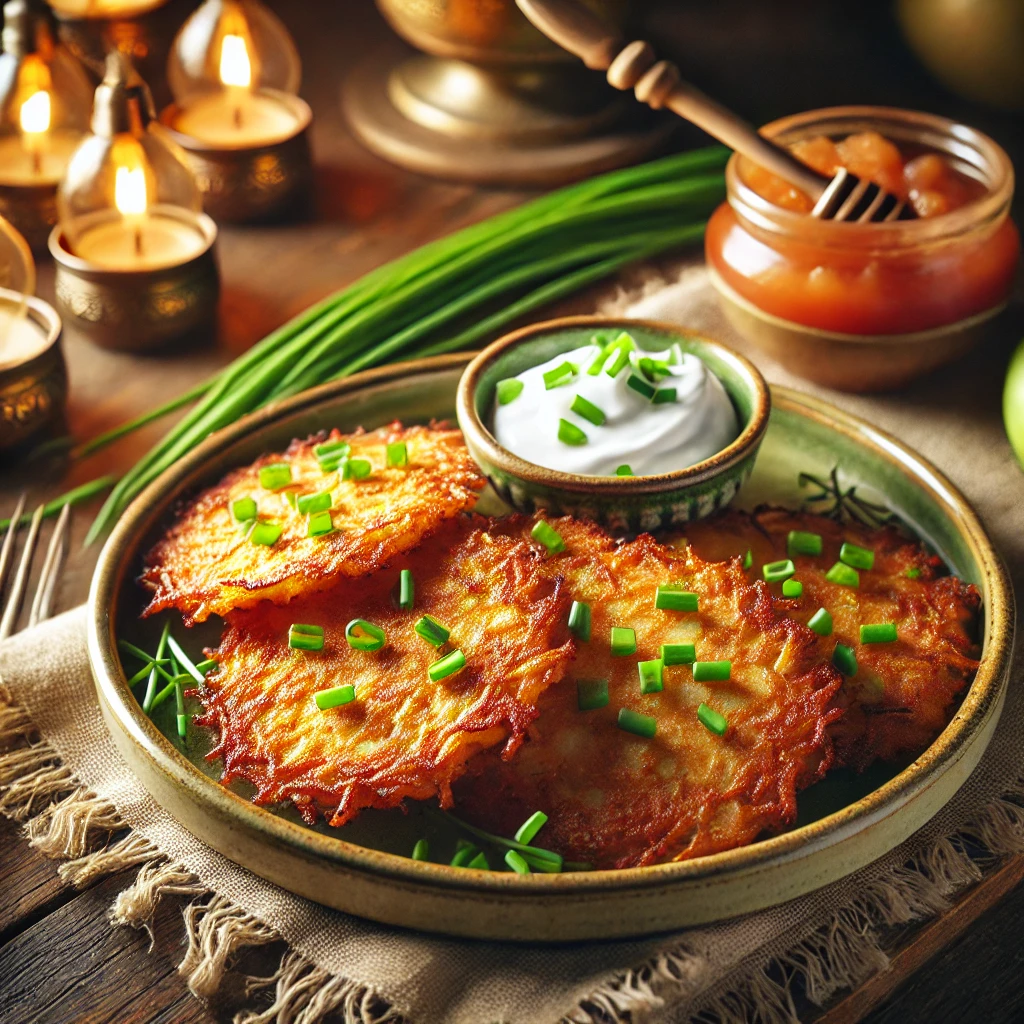
A Hanukkah Tradition
The frying oil symbolizes the miracle of the Temple’s oil lasting eight days. Originally, Hanukkah fritters were made with cheese or buckwheat before potatoes became common in Eastern Europe.
Crisp, Savory Comfort Food
Grated potatoes and onions mix with egg and matzah meal before frying to perfection. Some families add baking powder for fluffiness or swap in sweet potatoes. Whether topped with applesauce or sour cream, latkes bring comfort on a cold winter night.
4. Brisket

Brisket is the centerpiece of many Jewish holiday meals, from Passover to Rosh Hashanah.
A Dish That Feeds a Crowd
Jewish families chose brisket because it was an affordable kosher cut. Long braising with onions, carrots, and seasonings transforms the tough meat into something tender and rich.
A Tradition That Endures
Generations of Jewish cooks perfected this dish, sometimes adding a sweet-and-sour twist with tomatoes or wine. Brisket’s deep flavor and comforting aroma make it a staple at Sabbath dinners and celebrations.
5. Gefilte Fish

Gefilte fish is a classic appetizer, especially on Shabbat and Jewish holidays.
A Practical and Symbolic Dish
Ashkenazi Jews created gefilte fish by grinding whitefish, carp, or pike and mixing it with eggs and matzah meal. This made expensive fish go further and eliminated the need to pick out bones on the Sabbath.
A Love-It-or-Hate-It Delicacy
Traditionally, the mixture was stuffed back into fish skin, but today it’s shaped into patties and poached in broth. Served cold with carrot slices and horseradish, gefilte fish is a nostalgic favorite for many.
6. Kugel
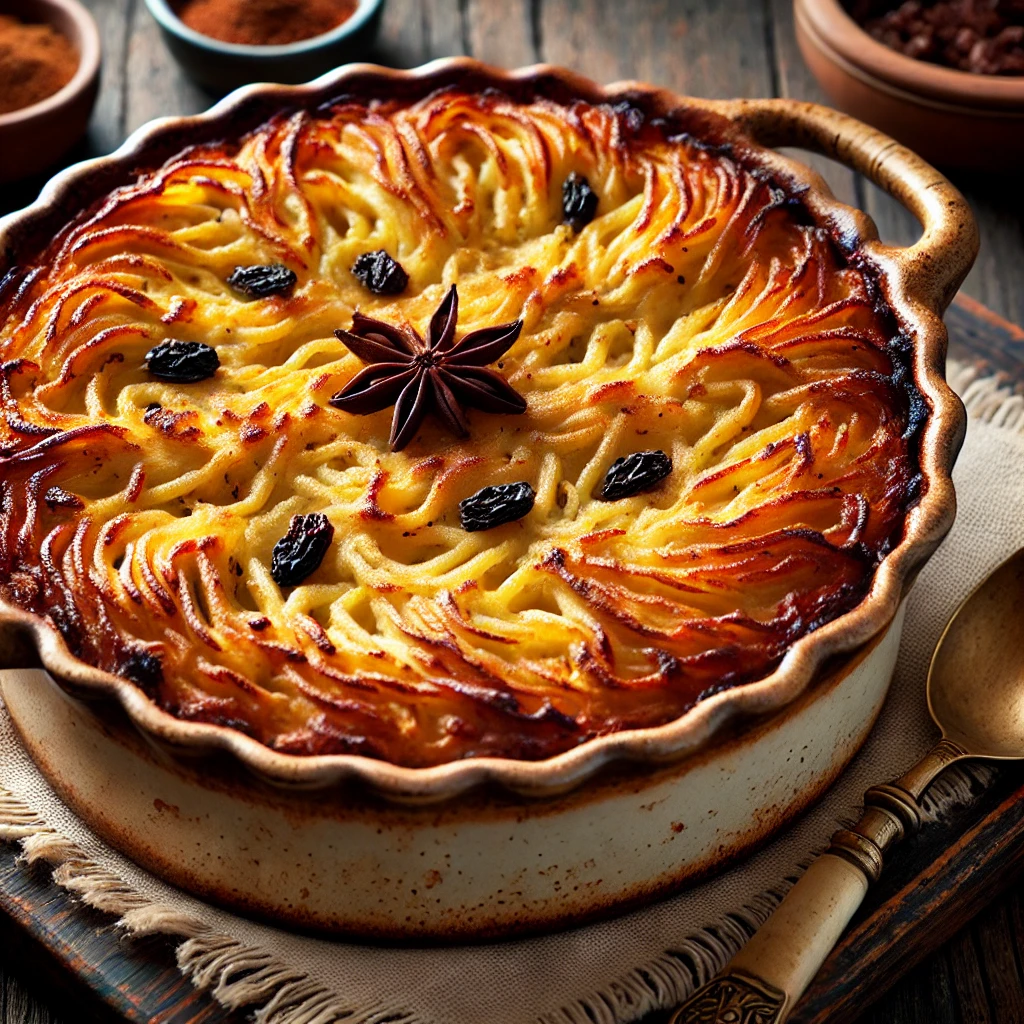
Kugel is a baked pudding that appears at nearly every Ashkenazi holiday meal.
Two Popular Types
Noodle kugel (lokshen kugel) is a sweet dish with egg noodles, dairy, and cinnamon. Potato kugel resembles a large latke, with crispy edges and a soft interior.
A Centuries-Old Comfort Food
Jewish communities in medieval Germany developed kugel over 800 years ago. Whether sweet or savory, it remains a beloved Shabbat and holiday side dish.
7. Bagels with Lox and Cream Cheese
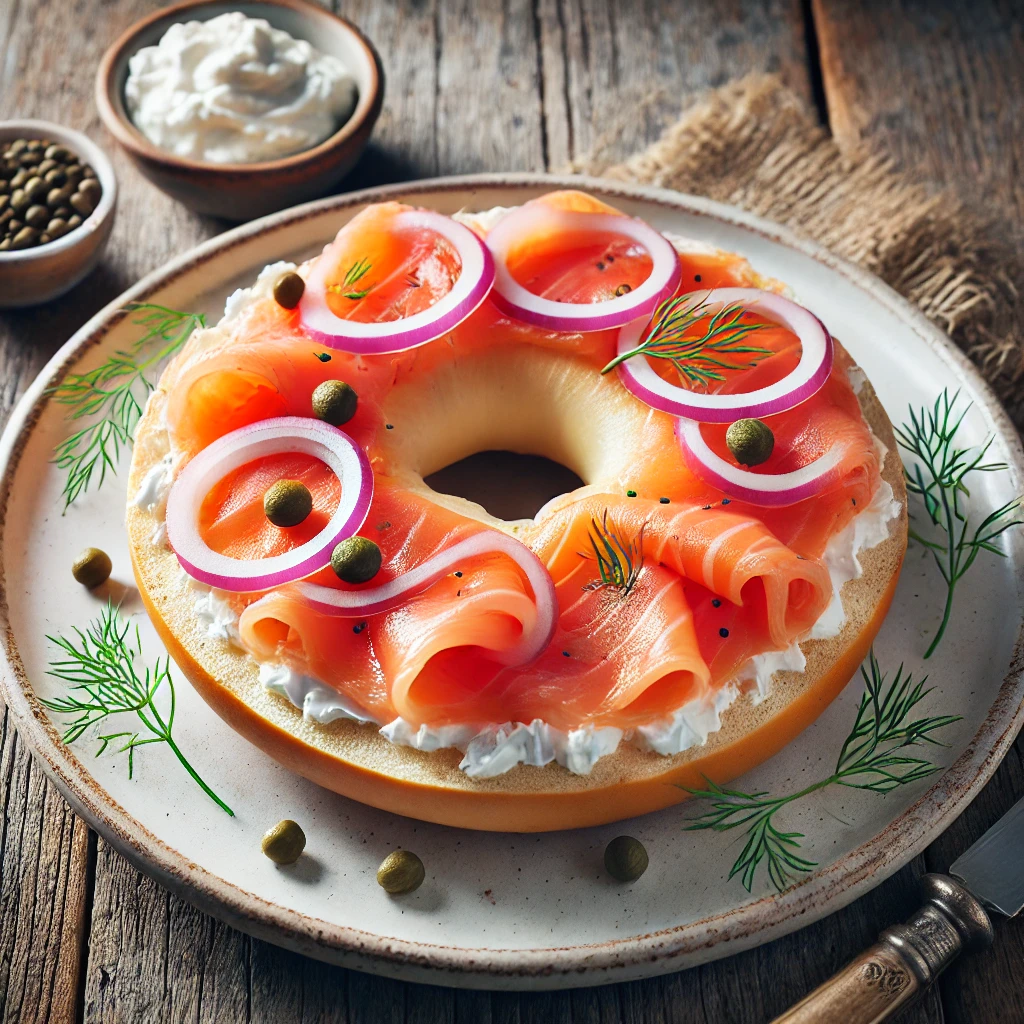
This Jewish breakfast classic has become a favorite worldwide.
Polish Roots, American Fame
Bagels originated in Poland’s Jewish communities and arrived in America with immigrants. In the early 20th century, Jewish New Yorkers paired bagels with lox and cream cheese, creating an iconic meal.
A Perfect Combination
The chewy bagel, creamy schmear, and silky cured salmon come together for a balanced bite. Many top it with onions, tomatoes, or capers for extra flavor.
8. Falafel
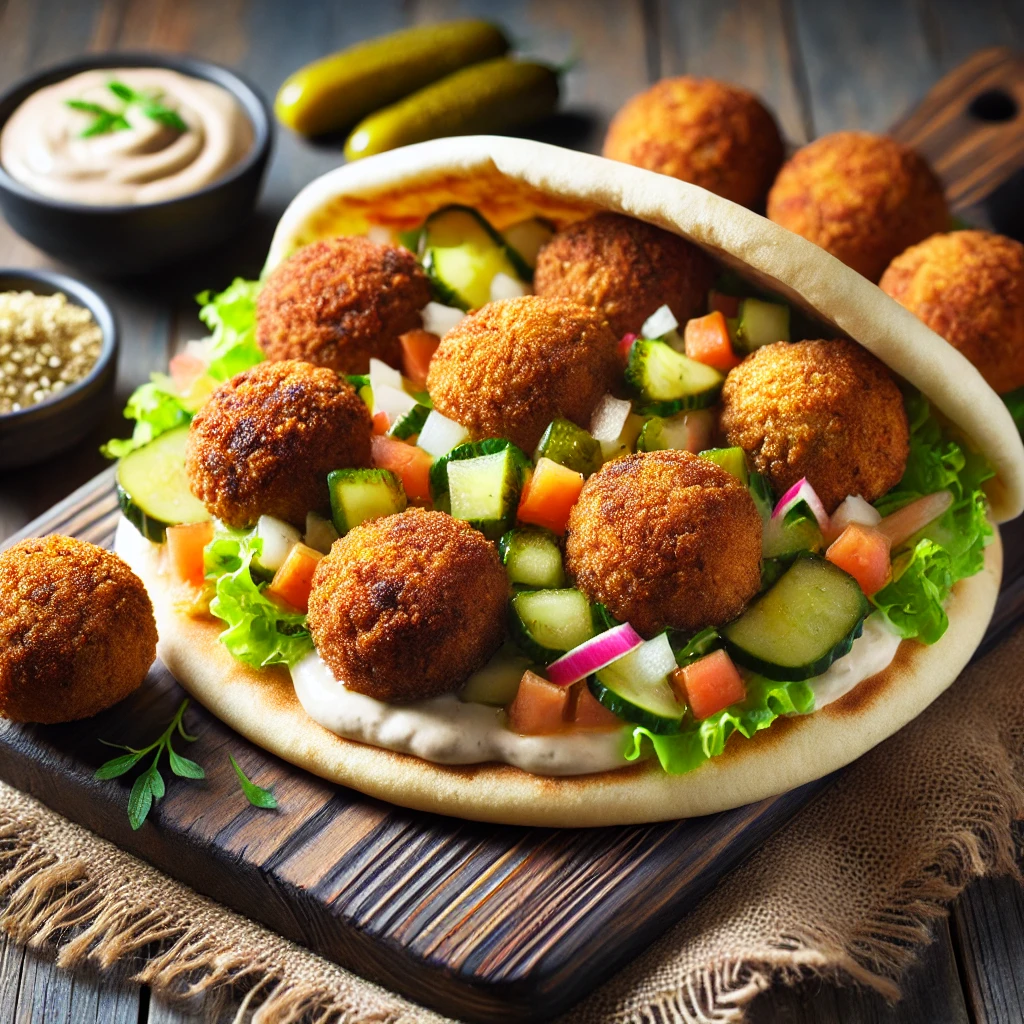
These crispy, spiced chickpea balls are a popular street food in Israel.
Middle Eastern Origins
Falafel likely developed in Egypt before spreading across the Middle East. Jewish immigrants embraced it as a meat-free, high-protein meal.
A National Favorite
Stuffed into warm pita with salad, pickles, and tahini, falafel became one of Israel’s most beloved dishes. Its affordability and bold flavors made it a staple across Jewish communities.
9. Rugelach

These flaky pastries are a staple in Jewish bakeries and homes.
A Treat from Eastern Europe
Rugelach originated in Poland’s Jewish communities. The dough, made with cream cheese or sour cream, creates a tender texture.
Endless Fillings and Variations
Traditional rugelach contains cinnamon sugar, fruit preserves, or chocolate. The dough is rolled into crescents, giving them their signature shape. Served on Shabbat and holidays, rugelach remains a favorite for dessert lovers.
10. Cholent (Sabbath Stew)
Cholent is a slow-cooked stew made for Shabbat lunch.
Cooking Without Work
Since cooking is not allowed on Shabbat, Jews developed cholent to simmer overnight. Ashkenazi versions use beef, beans, barley, and potatoes, while Sephardi variations include lamb, chickpeas, and spices.
A Dish with Deep Roots
Cholent dates back to at least the Middle Ages. Traditionally, families left it in the village bakery oven overnight. By morning, it filled homes with a rich, comforting aroma.
Why These Dishes Matter
Each dish on this list represents Jewish history, culture, and tradition.
Some foods, like matzo ball soup and latkes, connect to religious holidays. Others, like bagels with lox and falafel, became everyday favorites. Whether savory or sweet, these dishes tell a story of resilience, adaptation, and love for food.
Trying them offers more than great flavors—it provides a taste of Jewish life across generations.

